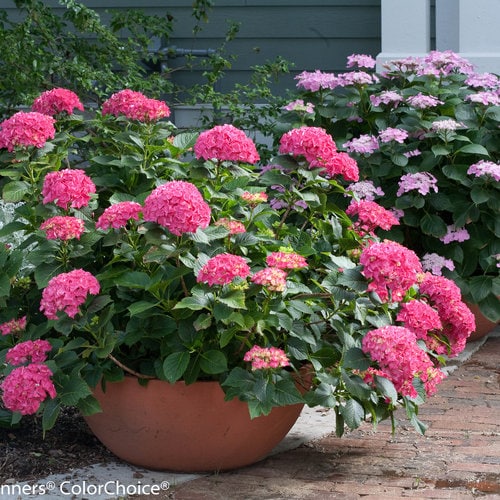Having a smaller garden space shouldn’t keep you from enjoying a gorgeous hydrangea. Yes, you might think that hydrangea shrubs grow big and full and require yearly pruning. However, there are smaller, dwarf varieties that give you the same lovely, long lasting flowers, but take up less space in your landscape bed.
For a general overview of the different types of hydrangeas, read All About Hydrangeas and Choose One for Your Yard.
What Is Considered a “Small” Hydrangea?
Small, dwarf hydrangeas grow 3’ or under, with a few exceptions. Larger hydrangeas can grow to be 8 feet tall. If you have a smaller space, it makes sense to plant a dwarf which will require very little pruning vs a large one which would require yearly pruning.
There is truly a hydrangea for every sized garden. Although there are many varieties of dwarf hydrangeas, we will feature 6 popular species that are great for tight spaces and will add color to your landscape
Hydrangeas paniculata (also called panicle hydrangeas, do well in sun and flower on new growth, so pruning them in the fall or early spring won’t affect their flowring have rounded or cone-shaped flowers. They prefer full sun.
“Ruby Slippers” oakleaf hydrangea. The large, long-lasting, upright cone-shaped white flowers bloom mid-summer and change to pink as they age. It has lovely bold-textured leaves of red to burgundy which create seasonal interest through winter. Looks good as an focal garden shrub or combined with other shrubs or perennials. It grows 3-3.5 ft. tall and performs best in full sun or part shade.
‘Bobo” Paniculata This stunning hydrangea is loaded with magnificent white blooms that turn to a really pretty antique pink as they age and flowers from July to early fall. ‘Bobo’ has an upright habit which makes this plant a great choice for a small amount of space or a container planting. It was a gold medal winner for its innovative size and no-flop habit. Prune in late winter or early spring. It grows 30-36” tall and likes sun to part shade.
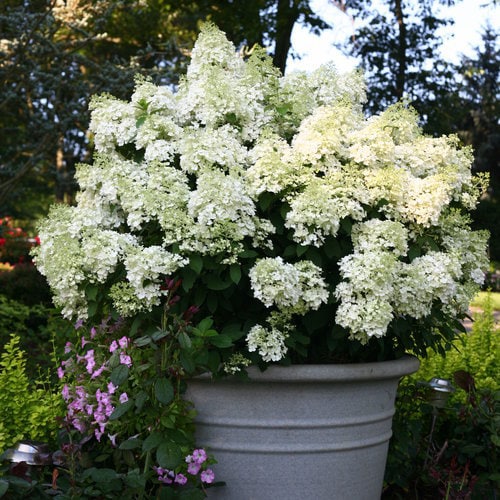
Paniculata ‘Little Lime’. This has a very compact habit that blooms lime green. Dark green leaves are crowded on each strong stem. Blooms form in July. This is the dwarf version of the best-seller ‘Limelight’. It has big green blooms in summer and flowers turn pink/red in fall. Its compact habit won’t outgrow its space.
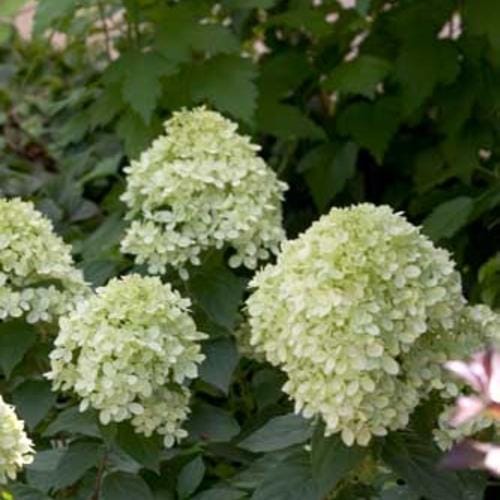
‘Little Quick Fire’ Paniculata. This is the dwarf form of the popular Quick Fire. Shrub has fluffy, creamy spikes and is one of the first to bloom in early summer. The flowers mature to a reddish-purple in the fall. Mature size can reach 3 – 5’ tall and wide. Trim in late winter/early spring. It does best with at least 6 hours of sunlight, but prefers to have some afternoon shade.
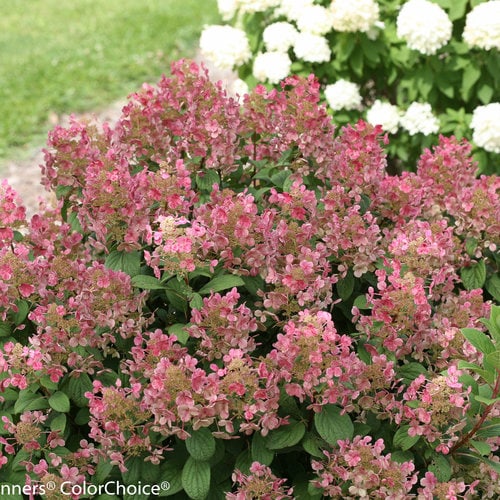
‘Fire Light Tidbit’ Panicle. If you have an area that’s in full sun, you should consider growing one of the Hydrangea paniculata varieties. Also called panicle hydrangeas, these plants do well in sun and flower on new growth, so pruning them in the fall or early spring won’t affect their flowering. Fire Light Tidbit will grow 2 to 3 feet tall and wide. As the flowers mature they turn a lovely pink color. Panicle Hydrangeas do not turn blue, no matter how acidic the soil.
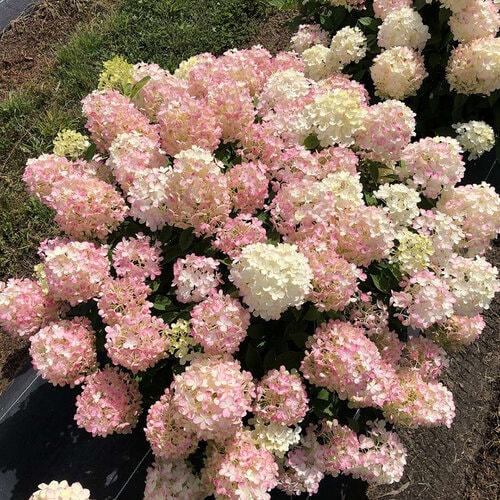
Cityline Paris Bigleaf Hydrangea. One of the smallest hydrangeas (1-2’high and 2-3’wide) and doesn’t require any pruning. Has vivid deep red flowers with dark green foliage. It’s the reddest flower color of any big-leaf hydrangeas and the smallest and most compact of any hydrangea. Loves sun to part shade. Perfect for foundations plantings, as an accent plant or as a container planting.
Can You Plant an Easter or Mother’s Day Hydrangea Gift in the Landscape?
You can’t plant these outside until the night temperatures are reliably above 50 degrees. But is you keep them in the house until then, they are prone to drying up quickly. Best approach is to get a pot with a drainage hole that’s at least one inch larger on all sides and the bottom, and replant your hydrangea in that container with some fresh potting soil on all sides.
Place the repotted hydrangea on a saucer to catch excess watering. Keep plant in a bright window. Put outside for a few days before planting. Clip finished flowers off right below the flower, but don’t cut the stems down. Your hydrangea should flower next summer. Don’t forget to water once a wee
Planting Dwarf Hydrangeas in Containers
You’ll get a lot of bang for your bucks planting a hydrangea in a container. Your hydrangea planted in a container are gorgeous planted alone, will be covered in blooms, and you don’t have to add anything, definitely a thriller all by itself.
Whitehouse Landscaping has been designing, installing and maintaining beautiful custom landscaping in Montgomery, Chester, and Berks counties, PA since 2000. If you have a tight space in your yard but want to add color, then a dwarf hydrangea is a worthwhile consideration.

